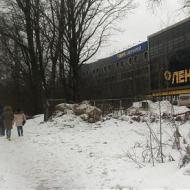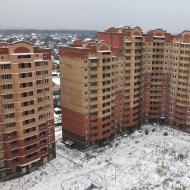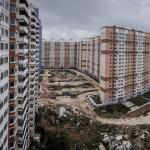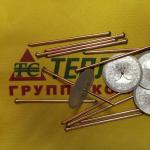
The State Duma introduced a new budgetary rule and united the reserve fund and FNB. What is a budgetary rule and why income from expensive oil does not go into the economy the meaning of economic strategy
The budget rule is economic policydetermining the limit amount of government spending depending on the price of oil. Following this strategy avoids the deficit of the state budget with sharp fluctuations in the oil and gas market.
The budgetary rule is an economic strategy in which the planned costs are laid the limiting cost of oil and gas resources, which determines the amount of government spending. CashEntering the treasury over this amount are sent to reserve funds. Accordingly, if the prices for hydrocarbons have not achieved the planned value, the budget is subject to cut to achieve a shortage of not more than 1 percent of GDP.
In 2004, against the background of a sharp rise in prices for hydrocarbons, it was decided to prevent possible pumping of the state budget to petrodollars. For this purpose, a reserve fund was formed and the so-called "cut-off price". If the cost of the barrel of oil reached $ 20 (in 2006 - $ 27), the super-profile automatically entered the accumulation, which made it possible to provide a "airbag" in the event of a crisis: and it came already in 2008
The meaning of the economic strategy
The budget rule is what it is and what is his main essence? With a sharp rise in prices for hydrocarbons, politicians appear temptation to solve the social problems of the country and to engage in populism at the expense of rain from petrodollars who have spilled on the fertile soil of public tensions. But, as practice shows, investments in health care, education, housing, infrastructure do not bring instant returns, while long-term projects require rhythmic and perennial investments.
To link the hands of populists and ensure the future for the future, in countries that are overly dependent on the oil and gas market, the special rule of budget filling is introduced. The "basic price" of resources - hydrocarbons is established, based on which, it is planned to be the limit value of the states. The deficit can be only a certain value from the planned income (in the Russian Federation - 3.7% of GDP).
The rule provides a number of advantages:
- The birth of welfare funds at the expense of super-profile and unplanned income from the growth of the export of raw materials;
- Smooth and gradual implementation of socio-economic projects;
- Fast adaptation of the country's spending to the price situation;
- The formation of monetary reserves designed to ensure the fulfillment of government obligations in the event of a crisis.
Due to the sharp drop in the cost of oil, in 2016 the BP was canceled. Instead of filling the reserve fund, the state began to empty it hard. Thus, the "thumbnail of Russia" by August 1, 2016 amounted to only $ 38.18 billion, against $ 91 billion, which were available on September 1, 2014. According to calculations, barrel of oil under the current policies should have been about $ 80, which is far from reality
Principles of operation of the budget rule in Russia:
- Limit value budget deficit - 1% GDP;
- Prices for hydrocarbons are calculated on the basis of objective economic indicatorsrather than forecasts;
- The maximum magnitude of oil and gas revenues that can be used to cover the needs of the state budget - 3.7% of GDP.
The budget rule in Russia in 2017-2018.
Since its recent appearance, the economic principle under consideration has undergone significant changes, and in 2016 - and was frozen at all. In 2017, BP can again be used to accumulate stabilia. This perspective publicly voiced A.Siluanov - Minister of Finance of the Russian Federation. Profit arriving at the cost of barrel oil over $ 50 will be transferred to reserves - if there is a "public support".
The updated principle is designed not only to "untie" the economy from oil addiction, but also to save the Russian ruble from sharp oscillations. His course on world currencies will receive a more hard "ceiling", above which they will not be climbed. This measure can hardly be called popular, as it does not contribute to lower prices on imported goods As it strengthened russian ruble.
Criticism policy restrictions
Many analysts believe that the formation of reserves at the expense of super profits is an idea deprived of the future, since resources are actually frozen. Instead of going to implement profitable projects, money remains in suspended for the years. When the cereals of crisis phenomena come, funds are used to repay social tensions and again do not provide GDP growth.
In other words, the budget rule of filling the revenue part of the state budget leads not to the radical restructuring of the economy, but to the accumulation, freezing of problems. To feel this to the fullest, you can look at the example of Venezuela. High prices for hydrocarbons, as thought, allowed the country for a 10-year term to cure many "chronic diseases": employment, overpopulation of cities, unavailability of education.
But a two-year decrease in oil prices forced old difficulties to flare up with a new force. Due to the deep dependence of the population from state subsidies, all social achievements collapsed for several months. It should be noted that economic policy in the Russian Federation turned out to be much more balanced, and instead of a total impoverishment, the country collided only with significant income correction. But without deep transformations of financial and economic policy, Russia can also comprehend the fate of Venezuela.
Published calculations of the Ministry of Finance for the main parameters budget system and the course of the ruble during the implementation of the "temporary budget rule" from February. At the price of oil at $ 55 per barrel, the estimated equilibrium exchange rate of the ruble will be without converting superplan income 58.05 rubles / $, when implementing this policy - 64.9 rubles / $. The budget, according to these calculations, is balanced at the price of oil about $ 58 per barrel and the course of about 64 rubles / $. Actually financial ministry It implies the devaluation of the ruble in the current situation at approximately 10%.
Reuters agency, the main channel of information for the operators of the foreign exchange market, published official calculations of the Ministry of Finance for the basic parameters of the budget, depending on the application of the "budget rule". Recall, the rule as such can be in 2017 introduced into the Budget Code and suggests in various options the conversion in sovereign foundations of the part of oil and gas revenues federal budget Depending on the price of oil. After the meeting, Vladimir Putin's president, January 18, from mid-February, was put into effect temporary, before the adoption of the amendments to the BC, the budget rule in a hard version (see "Kommersant" of January 21). Budget for 2017, calculated on the basis of the oil price of $ 40 per barrel, will not rule. The Ministry of Finance through the operations of the Central Bank stores in the currency accounts of the treasury in the Bank of Russia exports from oil exports and is ready to spend them (in accumulated volumes), regardless of the expenditure of the Reserve Fund and the National Welfare Fund (FNB) when oil fall below $ 40.
Based on the calculations of the Ministry of Finance, during oil for $ 40 per barrel, the settlement average annual exchange rate of the ruble should be 69.42 rubles / $ (federal budget deficit - 3.1% of GDP, spending reserve funds - 1.8 trillion rubles). For current price Oil at $ 55 per barrel budget deficit will be without the application of the budget rule of 1.5% of GDP, spending reserve funds - 464 billion rubles. (What implies non-use of the FNB in \u200b\u200b2017). When applying the declared standby for the permanent purchase of reserves to the Treasury account, the deficit will be 0.7% of GDP, the reserve fund will be replenished by 241 billion rubles, the ruble exchange rate should relax by about 10% and amounted to 64.9 rubles / $.
The logic of the calculations of the Ministry of Finance assumes that without the applications of the budget rule and without the devaluation of the ruble, the balance of the federal budget is possible only at the price of oil at $ 76 and higher (the figure is obtained by a linear approximation of the calculations of the departments of Anton Siluanov). With a ruble devaluation, a formally non-affecting free swimming mode, the budget is fully balanced (zero deficit) at the price of oil about $ 61 per barrel, the refusal to use sovereign funds is possible in 2017 at the price of oil about $ 61 per barrel. Without a budget order, sovereign funds will be replenished at the price of oil above about $ 62 per barrel, using the rule - at a price above $ 53. The difference in the calculations is determined, apparently, the calculated changes in borrowing in the domestic market. In the latter case, at the price of oil above $ 53, oil dipped in the "Fund-buffer" during the course of about 64 rubles / $ will exceed the estimated waste of sovereign funds in 2017 in 1.8 trillion rubles.
According to the calculations of the Ministry of Finance, the current course level, about 60 rubles / $, is considered impossible. When implementing the "Budget Regulation", it will reach this level under oil about $ 75-80 at a budget surplus about 2% of GDP and increase in 2017 of the reserve fund for more than 2.3 trillion rubles. Thus, the statements of the Ministry of Finance and the Central Bank that the budgetary rule "as a whole" will not have influence on the ruble rate, its own calculations of the financial department is convincingly refuted.
Moscow, 14 Jul - RIA Novosti.The State Duma at the plenary session on Friday adopted in the second reading a government bill on the new design of the budget rule and on the association of the National Welfare Fund (FNB) and the Reserve Fund based on the FNB.
Budget Rule
Planck cut-off at the price of URALS oil in the updated budget rule Set the level of 40 dollars per barrel. Oil and gas revenues obtained at the price above this bar will be sent to reserves.
The draft law determines the maximum amount of the costs of the federal budget, which may not exceed the amount of oil and gas income, calculated on the basis of the base price of oil, the basic export price of natural gas and projected currency rate, nonnephnegas income, as well as service costs. The basic price of URALS oil is installed at $ 40 per barrel at 2017 prices and is subject to annual indexation by 2% since 2018.
FNB + Reserve Fund
In the second reading, amendments were amended to combine the sovereign Funds of the Russian Federation on the basis of the FNB. The deputy head of the Ministry of Finance of the Russian Federation Vladimir Kolychev explained that such an association is assumed in conditions when the exhaustion of reserve fund funds are predicted against the background of significantly declined in the last two or three years of oil prices.
At the same time, the target component of this fund remains the same as there were the objectives of the previous two funds: funding aimed at the balance of the insurance pension system, financing the deficit of the federal budget and co-financing voluntary pension savings. To form a joint fund is assumed at the expense of additional oil and gas income.
If the total amount of funds in the joint fund exceeds 5% of GDP, its use is proposed to limit the falling oil and gas income, if the total amount of agents are less than 5%, then limit this volume of 1% of GDP.
The amendments are envisaged that the funds of the reserve fund are credited to the FNB (Joint Fund) no later than February 1, 2018. The Ministry of Finance will publish information on the value of the FNB assets at the beginning of the reporting month, crediting funds to the specified fund, their placement and use in the reporting month.
According to the approved amendments, before reaching the volume of FNB funds placed in the Bank of Russia, at the end of the next fiscal year and (or) the first and (or) second year of the planned period of 7% of the predicted volume of GDP, the placement of funds of the FNB in \u200b\u200bother financial assets Not allowed, with the exception of funding begun before January 1, 2018, self-sufficient infrastructure projects.
(Proposals for the formation of individual pension capital and tax reform were shipped by a white house for long-term improvement). On Monday, the law on the new rules was signed and president Vladimir.
A significant change from the initial version is to replace the Fund, on the basis of which the government will save reserves. Originally suggested to save Reserve Fund and translate the FNB funds into it, the last one.
In this case, in the FNB, there would be a means for large infrastructure projects for some time. Anti acted, which considered that the proposals contained "risks to ensure co-financing voluntary pension savings of citizens of the Russian Federation, a balance of budget, as well as financing self-sufficient infrastructure projects."
Already to the second reading in the State Duma, in mid-June, the Ministry of Finance agreed on a compromise - the reserve fund will be abolished instead of the FNB. All of his remnants, if so, will be at the end of this year, will be translated into the FNB. In the meantime, the budget for 2017 is planned full exhaustion of reserve fund funds at the end of this year to finance budget deficit.
The Ministry of Finance went so easily for concessions from practical considerations - the multitasking of the goals of the FNB has already formed a large reservoir of regulatory documents that would have to rewrite after the transfer of the FNB money to the reserve fund. On the contrary, the risk to waste savings from potential lobbyists who want to increase spending on infrastructure projects, in signed by Vladimir Putin, law is limited.
Recall that in 2013, 972.5 billion rubles. We were reserved for 12 infrastructure projects. Another 300 billion rubles. - Quota also on various projects. The rest is considered to be liquid funds of the FNB, which are placed in ZVL or on VEB deposits, and.
According to the new law, all old projects are confirmed, but to further spend the FNB funds for something else, in addition to the budget deficit, it is possible only after reaching the threshold in 7% of GDP. According to the Ministry of Finance on June 1, the FNB is 4 trillion 192 billion rubles, or 4.7% of the current year's GDP.
Costs limit
Another important limit for budget Policy - restriction of costs by the level of permissible deficiency in 1% of GDP.
For 2018, the transition period is provided when the deficit is allowed to exceed slightly above 1%. This principle is already incorporated into the federal budget project for 2018-2020, the main parameters of which the government was formed on June 29. Then the government approved the costs in 2018 at the level of 16,222 trillion rubles. Revenues next year will be 14,659 trillion rubles. The deficit is estimated at 1.563 trillion rubles, or 1.6% of GDP. For 2019 and 2020, the size of the deficit is already limited to 0.8% of GDP.
Against this background, all budgetary approvals took place unexpectedly quiet this summer. In July, the Prime Minister held ten conciliatory meetings on the federal budget expenditures, none of which led to the scandalous contradictions, so frequent in the past. The only controversial question is whether to extend the program maternal capital And in 2020, it was decided immediately - the program extended, but frozen its indexation in 2018 and 2019.
But the passive budget campaign of this year is not related to any budget rules or the quality of budget allocations represented by the Ministry of Finance on the upcoming three years. Observers in the government say that the members of the current Cabinet, which will be dissolved immediately after the admission to the position of new president in 2018, do not build long-term plans.
No one in the White House has received an invitation or guarantees for participation in the new government. There is also no data and about the upcoming economic Program Future president. Consequently, the calculations required on new program Budget expenditures are difficult to make. August in the White House decided to spend in mass leave. All discussions on budget expenditures are postponed for autumn - in September, clarity may appear on the economic program of the president, and in personnel solutions.
The less in the government believe in another postulate, which follows from the budget regulations signed by the President. It provides for the formation of reserves from oil and gas income exceeding the base price of oil at $ 40 per barrel of Urals oil in the prices of 2017, which will be indexed since 2018 by 2%. Thus, in 2018, the base price will be $ 40.8, and in 2035th - $ 57. However, according to forecasts, the price will not exceed $ 40 per barrel until 2019.
The new budget rule, which should restore strict approaches to the use of oil and gas revenues from 2020, will take as the basis of the price of oil $ 40 per barrel and will take into account the cost of servicing the public debt
Minister of Finance of the Russian Federation Anton Siluanov (Photo: TASS / Alexander Astafiev)
Without primary deficit
The new budget rule is the system of rules for using oil and gas income - earn from 2020, determines the base price of the oil to the $ 40 mark per barrel and will limit budget expenditures in such a way that they should be equal to basic income minus interest expenses on debt service, in Moscow financial Forum on Friday Finance Minister Anton Siluanov. "Preparation of the budget rule, which, we consider it is possible to implement since 2020, it will be that at a price of $ 40 per barrel we must have a zero primary deficit. That is, all those debt service costs that will be laid in the budget expenditures, just will be the deficit that we can afford, "said RBC correspondent with the Siluanov, said.
In other words, the new budget rule of the Ministry of Finance will be considered oil and gas revenues at a price of $ 40, the forecast nonnephtegase income to them (this amount will be considered basic incomes) and plan budget expenditures so that they are not higher than the basic income, not counting interest payments .
The new version of the budget rule will be the fourth from the moment of the introduction of such a state-in-government management practice in 2004.
The old budget rule, which operated in 2013-2015, implied that the limit budget expenditures are equal to basic income plus 1% of GDP. A new rule will replace this 1% amount of interest expenses, which is now just in 1% of GDP. According to the budget for 2016, interest expenses this year are planned at 646 billion rubles., Or 0.8% of GDP. Primary budget deficit (deficit without accounting for debt service costs) is scheduled at the level of 2.2% of GDP, and the Ministry of Finance wants that from 2020 there is no primary deficit.
Why $ 40?
According to the old rule, the base oil price for calculating oil and gas revenues, which can be directed to funding budget expenditures, was defined as the average annual price of oil URALS in a five-year period with the annual increment of this period for one year up to ten years (averaging for the ten-year period should have started from the budget 2018). Supplies (oil and gas revenues from exceeding real prices over base) were listed in sovereign funds. The rule worked on growing oil prices, but in 2015 the estimated price of oil for the budgetary rule was $ 96, while the actual price fell to $ 50. Therefore, for 2016, the budget rule was suspended, and in exchange temporary rules were introduced (valid until February 1, 2017), allowing to spend oil and gas revenues and savings of reserve funds to finance the costs of the federal budget.
Now it is proposed to use in the budget rule instead of the average oil price for previous years the conservative price of $ 40 per barrel. This price is made because it corresponds to the threshold of profitability of mining of shale oil in the world ($ 40-50), explains a high-ranking federal official who is familiar with the plans of the Ministry of Finance. According to him, soon the agency wants to make a legislative initiative to a new Duma in order to introduce a budgetary rule since 2020. The representative of the Ministry of Economic Development reported RBC that the document did not flow into the ministry.
The average price of Urals in January-August 2016 amounted to $ 39.36 per barrel, and in August exceeded $ 40 per barrel ($ 43.9). If the new budget rule was valid now, in August the reserve fund would be able to replenish.
The issue of the cut-off price - $ 40 or closer to $ 50 - still have to be discussed in the government, says RBC federal official. The Ministry of Finance invites it annually index it for dollar inflation (in 2014 it amounted to 1.6%, but in 2015 - only 0.1%), spoke earlier RBC source close to the Ministry of Finance. In general, the fall in oil prices and volatility on currency market Forced the Ministry of Finance differently take a look at the purpose of the budget rule. Its meaning should be wider than just the opportunity to stabilize the State Finance, the task is to "isolate the economy from the volatility of oil prices," says the interlocutor in the financial and economic block of the government. We are talking about whether the real effective ruble rate is not so strong together with oil prices and the relative prices in the economy, inflation, are not herself. couche conditions And everything that affects the profitability of companies in different sectors. "
"We focus on the fact that we have a budget deficit gradually decrease by one percentage item annually. If we choose $ 40 as clipping cost, then we come to a balanced budget by 2020, if you choose $ 50 - we arrive by 2019. Depending on which the cut-off price is, the moment is determined when the budget rule will work fully, "the official of the financial and economic block says.
















